The vehicle you see here is the single best all-round adventure rig I’ve ever driven or camped out of. I’ve written up bits of it multiple times in Outside, but there’s not one single writeup out there summing up the whole thing. So, here you go.
Who Am I?
If you’re coming into this through Google, or someone sent you the link, it might be useful to have my bona fides. I started working at a little magazine called Intersection in London in 2001, became the first road test editor at Jalopnik back when Spinelli, Wert, Lieberman, Hardigree, Davey G and I grew that site in to the powerhouse it was, forever changing car media. I did the same on my own in motorcycles, before transitioning to the outdoors 10 year ago. I’ve been Outside Magazine’s outdoor lifestyle columnist for the last seven years. Along the way I’ve written for pretty much every vehicle or men’s magazine you’ve ever heard of, done a little precision driving/riding for ads and commercials, and recently started working with my friends at GFC too, on an entirely new project we’ll make public in 2023.
Aside from work, I live in Montana, where I drive off-road every day, and have organized my own off-road trips across six continents. Baja, Mexico, is my favorite place on earth, and it’s where I married my wife back on March 13, 2020 (the day the pandemic was declared). We drove down and back, with our dogs, in my first Ranger.
Why The Ranger?
I look at vehicles not for the experience they offer in stock form, but for their potential as platforms to support modifications and heavy use.
The current North American Ranger was released in Australia (and most of the rest of the world) in 2011, and remained that country’s best selling vehicle until it was replaced by the next generation Ranger, which should enter the American market for the 2024 model year.
I first drove a Ranger in Australia, as part of a trip ARB put together to celebrate its 40th birthday. Some of the company’s execs, and a few journalists and PR people from around the world all took eight vehicles across the Simpson Desert. It rained more than expected, conditions were dreadful, and every single one of those trucks broke and got stuck at least a dozen times. Except the Ranger. I resolved to buy one as soon as they brought them over, and Ford ended up sending me one of the first ones off the production line when they went on-sale back in 2019.
I had planned on buying that blue Ranger from Ford at the end of the loan period, but the whole pandemic thing sent used car prices crazy, and it made more sense just to start fresh. The silver Ranger has given me the opportunity to learn from that first build, and really execute something that’s just totally dialed.
If I had to sum up the Ranger’s appeal in two sentences they would read: This is a Hilux beater, not a Tacoma competitor. It’s a designed-for-hard-use platform that’s proven durable in some of the harshest conditions on the planet, and is supported by the highest quality aftermarket products available anywhere.
What’s It For?
Daily driving, getting groceries, supporting shoots, going hunting, camping trips, long highway drives, big adventures, reasonably challenging off-road trails. I cringe at the world “overlanding,” but yes, this is what this truck, as it’s built here, is better at than anything else I can imagine.
Protection
Front Bumper: ARB Summit. ARB is the only brand anywhere in the world that I’m aware of that has performed actual crash tests with its bumpers mounted to vehicles. Other quality Aussie bumper makers like TJM do perform physical tests, but only of bare bumpers inside test rigs. That’s to say: there’s nothing safer, either in an animal strike, a high speed road accident, or an off-road scrape. These things also look great, are impeccably finished, and are designed to work with all your vehicle’s advanced safety features like radar cruise control and automatic emergency braking.
My buddy Connor, who after driving this truck purchased a Ranger for the express purpose of copying my build, asked me if the Summit was worth the price and hassle. In response I explained that I could hit an animal the size of a donkey at highway speeds while thousands of miles from home, with a reasonable expectation that even if some vehicle damage did occur, I’d be able to continue my journey. If that’s not value in this whole context of vehicle-based adventure travel, I don’t know what is.
Sliders: Shrockworks. They don’t respond to emails, or offer any sort of customer service whatsoever, but this Texas-based company does make an extremely robust product. While wheeling through 30 inches of fresh snow on a hunt in October, I managed to collide with a large boulder hidden under the snow at about 10 MPH. The collision was significant enough to pitch the entire vehicle into the air, and it then landed on the drive side slider and a frame crossmember that represents the lowest point under the ranger. That crossmember is crushed, the slider doesn’t even have a scrape on it. If I hadn’t had these on, that rock would have destroyed my door sills, causing thousands upon thousands of dollars of damage.
Rear Bumper: Relentless Fabrication. This was a prototype they made for my first Ranger way back in 2019, before making the decision not to support this vehicle with production products. While it’s immensely practical—offering a place to mount a matching spare, my 15 Lbs Power Tank, a DMOS shovel, and a custom camp table, it’s also heavy, a real pain in the ass to use day-to-day, and its powdercoat finish is of really poor quality, which has already allowed surface corrosion to creep in. I often joke that operating the swingout is an intelligence test. If you can figure out how to work it yourself, you can borrow my truck. So far, only one non-professional truck person has managed to do that. You can borrow the Ranger any time Tessa.
The Ranger already has a steel rear bumper. If you’re looking to add a swingout, do yourself a favor and just grab a Rig’d Supply Ultraswing. It’ll be lighter, easier to use, and offer almost as much capacity.
Lighting
Let me treat this section like a brief how-to guide for adding lights to your vehicle, since this topic is so often misunderstood in Ameristan. My short brief on that is: bolting a dozen forward facing lights to a truck is not a flex, it is a sign that none of those lights work as intended.
It's the job of forward facing lighting to provide a comprehensive solution, lighting up everything you need to see as you drive. A single pair of driving lights should be able to illuminate ditches, crossroads, street signs, close up stuff, and the far distance, all at once, without making any of that difficult to look at. You want those lights to reach far into the distance so that they give you as much reaction time as possible at realistic driving speeds. You don’t need to be a desert racer to benefit from distance, all of us are doing 45-65 MPH on dirt roads regularly. And if, like me, you live or travel through rural places, you’ll also want to be using those lights on the road, where speeds may be even higher. The more distance a pair of driving lights provides, the more you’ll be able to relax on those long drives after dark.
For my primary driving lights, I use a set of Lightforce Genesis Pros mounted to the ARB bumper. Together, the pair produces 1 lux of illumination at 1,224 yards, with a perfect 5,000 Kelvin color temperature that accurately renders colors, and has a long enough wavelength to penetrate light dust or precipitation. Mounted in front my grill, all their light is out in front of the vehicle, producing no glare or reflections on the hood, and eliminating the tendency for roof-mounted lights to blow out dust and precipitation right in front of your eyes.
These things are great, and all anyone needs. But I must note that they’re a little behind the performance of top-tier all-LED driving lights, the current standard for which is 1 lux at 1,400 meters. They’re also nowhere near as effective as the pair of HTX2s I put on Virginia’s Land Cruiser, which us a hybrid LED/HID setup to push 1 lux all the way out to 1,800 meters (1.1 miles). I don’t find the Genesis’ performance lacking enough to merit the change, but not a nighttime drive goes by that I don’t regret not going with the HTX2.
I also added a single row 50-inch Lightforce Nightfall light bar to the front of the GFC. It looks great (here I go treating lights as a vanity item), but isn’t really necessary since the Genesis Pros are already doing anything it can do, with a lot more distance. I justified the bar by thinking it would give me dispersed flood setup for dense woods or brush, but the Genesis Pros do fine in that environment too. I rarely switch on the bar.
There’s also a pair of Lightforce Rok40 flood lights mounted to the GFC, behind the cab, facing sideways and angled down at 45 degrees, and a pair of Rok20 ultra floods mounted on the camper's rear, facing backwards and down. I’m going to apply a yellow film to the 20s to turn them into chase lights in the near future, I’ve actually needed that visibility for other drivers a few times in recent snow storms, and while off-roading in heavy dust last summer. Switched together, these four lights are my work lights, allowing me to navigate really tight squeezes at night in confidence, or to work on stuff outside the vehicle at night. It’s really practical and helpful having them.
All the above are run off a set of switches Lightforce makes that fit flush on the underside of the vehicle’s center instrument cluster. The driving lights are wired up Aussie-style, which means the switch enables/disables them, and they then trigger on the hight beam stalk. That makes it easy and convenient to run them on the road, where I can switch them off as quickly and intuitively as I can my high beams.
Suspension
It’s a complete Old Man Emu BP-51 system, complete with upper control arms up front, and medium-rate springs at the rear. Again, ARB (which owns OME) performs actual real world testing on its products, putting 50,000 miles of development and validation testing into each individual vehicle supported by BP-51. Other brands just run numbers on a calculator to determine spring and damping rates. It’s common to see Americans turn their noses up at BP-51 in favor of more race-oriented shocks with three-inch dampers, but OME’s two-inch diameter is able to better prioritize ride quality, something that’s then boosted by the five internal bypass channels that alter damping rates to prioritize on-road handling, good ride quality, off-road compliance, and the ability to take big hits, all in a single product. BP-51s are also one of the only shocks to offer both compression and rebound damping adjustment. They also feature 50,000-mile service intervals and are built to stand up to harsh weather. So you’ll be pulling these things apart five times less often than rivals. That the front coilers ship set up for the weight of a Summit bumper complete with winch, and you can order different leaf packs designed to support different payloads just seals the deal. So long as you’re not racing, this is the single most effective suspension system you can buy.
When Hudson Hall and I installed the system, I think we must have failed to fully tighten one of the sway bar end link nuts. That came loose, and the end link fell off one night deep into a trail. I bolted on a new one a few days later, but it came loose too (the ball joint nuts are tricky to fully tighten). So, I ended up just removing the sway bar. That’s noticeably increased front articulation off-road, and hasn't really spoiled on-road handling to too great a degree, even when loaded to the gills and driving fast. I’d say my average speed on twisty roads has probably only decreased 5 MPH. A lot of that is thanks to BP-51’s superb damping, which is able to eliminate any undue sway. I think I’m just going to leave that sway bar off. You probably shouldn't treat this paragraph as good advice.
Wheels/Tires
Summer Tires: Toyo Open Country ATIII, LT 285/75-17 load range E. It’s common to see drivers treat all-terrain tires as a commodity, simply choosing the ones that offer their preferred size and load capacity at the lowest cost. That’s just dumb. Made in America on brand new tooling, the ATIIIs benefit from a production process that’s able to remove as much rubber as possible from anywhere it’s not needed. That makes them considerably lighter than any direct competitor. I’ve previously explained how all-terrains work in an in-depth article on Outside.
Winter Tires: Nokian Hakkapeliitta LT3, 285/70-17 load range D, studded. Simply the best winter tire I’ve ever used anywhere. I’ll be replacing the Land Cruiser’s Blizzaks with a set of these next winter. That the studs grip ice well is not a surprise. That they continue to do so after several thousand miles of driving on bare pavement is. Color me impressed.
Summer Wheels: Stock Ranger FX4 wheels. It’s difficult to find aftermarket wheels in an offset that simultaneously corrects scrub radius, while keeping the tires inside the fenders. Adding a one-inch spacer to the stock wheels does that just fine.
Winter Wheels: ROW Ranger Raptor wheels. My friends at Ford sent these over. They’re identical to the stock wheels in all but appearance. OE wheels will always be higher quality than aftermarket wheels, at least at sensible price levels. Having a second set of wheels allows me to leave the winter tires permanently mounted, so I can easily switch back and forth for trips south. And these look great. I run them with the same one inch spacers.
Interior
Seat Covers: Marathon. Local company based here in Bozeman. They fit perfect, the company has amazing customer service, they’re comfortable, and they’re waterproof.
Dog Net: Raingler. Not impressed, but it’s better than no barrier at all.
Rear Seat Delete: Goose Gear. All the quality of custom cabinetry, in one slick plate system that adds appreciable space, and squares off the rear half of the cab. Ton of mounting options, which I use to secure a fridge, and then leave the rest of the space open for dogs. Handy cubbies underneath make room for some infrequently used tools and spare parts.
Fridge: Domestic CFX3 35 and PLB 40 battery. Allows me to easily, conveniently take cold drinks and fresh food everywhere. Such a game changer for photo and video shoots and travel—you’ll never eat fast food again.
Camper
This is my second GFC Platform, the first was a V1, and this V2 brings some nice upgrades. Radically simple and immensely strong, it’s just a reassuring partner I never have to worry about. Keeps my gear secure, gives us a comfortable place to sleep no matter the weather, and mounts my lights, awning, Maxtrax and other stuff. I couldn’t live without one at this point.
I should also mention the Eezi-Awn Bat 270, which turns the GFC into our very own blended indoor/outdoor living space that we can set up instantly anywhere.
For bed power, I’ve been using a Wolf Haus Off-Road power plug, which connects to the vehicle’s stock wiring harness. The Ranger’s aux power remains available for two hours post key-off, so that’s plenty on its own for the GFC’s bed lights. For camping and whatnot, I just plug a Jackery Explorer 2000 into the outlet, and let it charge while I drive. That’s more than enough for 90 percent of my trips, without the fuss of adding solar.
Storage
Decked is another simple, robust product that adds immense practicality through both day-to-day driving, and big adventures. Custom drawer systems may take better advantage of every last square inch of space within a truck’s bed, but nothing is going to be stronger than Decked’s HDPE construction. And fitting another accessory I just never have to worry about is utility all its own. I love the SeaDek traction pad, but it’s frighteningly expensive.
There’s also an Mountain Hatch tailgate work surface back there, which is a nice upgrade, but not an essential.
Recovery
I detailed everything I carry in my recovery kit, and everything I carry in my drawers/on my camper here. I also have a Warn Zeon 10-S simply because that’s the Warn that fits the Ranger, complete with a Factor 55 Flatlink E.
Performance
I’m in love with the Ford Performance Tune. It fixes the Ranger’s problematic transmission programming and adds enough power and torque to make up for my big tires and additional weight, while restoring fuel economy back to something pretty reasonable. Anyone with one of these trucks should absolutely do the tune.
I also installed a 3-inch Magfnaflow catback exhaust system. It sounds really nice without being droney or loud, probably adds 5-10 horsepower, and looks a lot better than the mild steel unit that comes standard.
The End Result
Ever driven a big, lifted truck? They drive terribly. Not this one. It’s not slow, it’s not cumbersome, and it doesn’t break. It’s responsive and predictable on-road and off, and adds immense confidence when the going gets genuinely harrowing. There’s enough room for two adults and 300 lbs of dog, along with all our crap. I always feel like I could use more space, but the tradeoff is I can parallel park this thing in town without hassle, and it actually fits on off-road trails.
The entire build prioritizes day to day usefulness and long distance travel over extreme off-road capabilities, but as long as you understand that this isn’t a solid axle Jeep on 40s, then well, you won’t be forcing yourself to drive a solid axle Jeep on 40s in conditions that don’t merit that.
I think that’s it! As always, I’m doing this for my community. Feel free to ask any questions or for any help figuring out your own build. Nothing’s too rudimentary. All I ask is that we keep this a valuable conversation, and avoid the finger pointing or name calling that too often plagues online conversations.


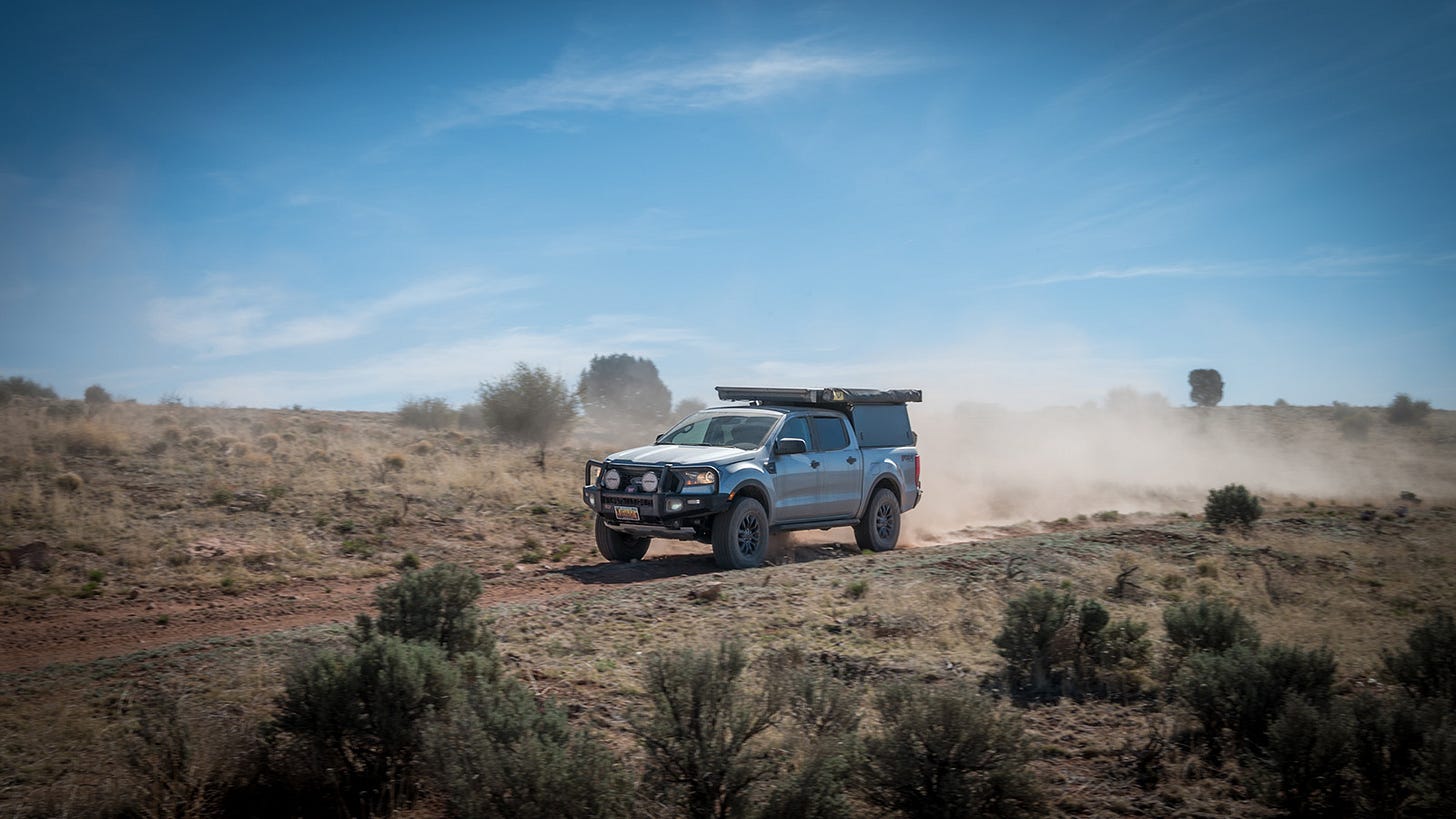
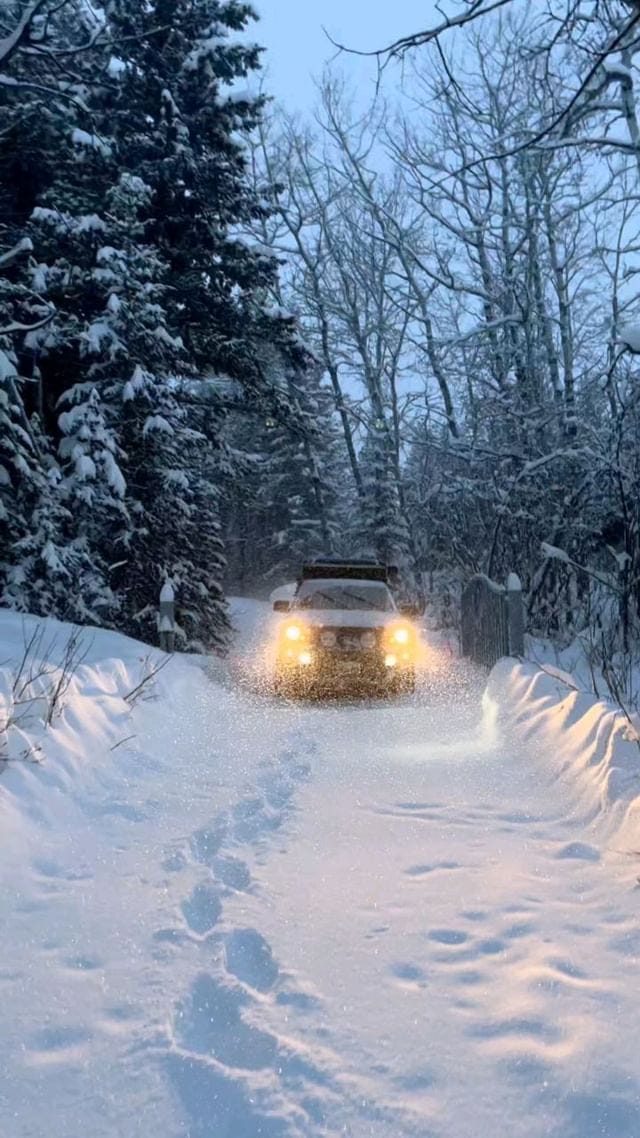
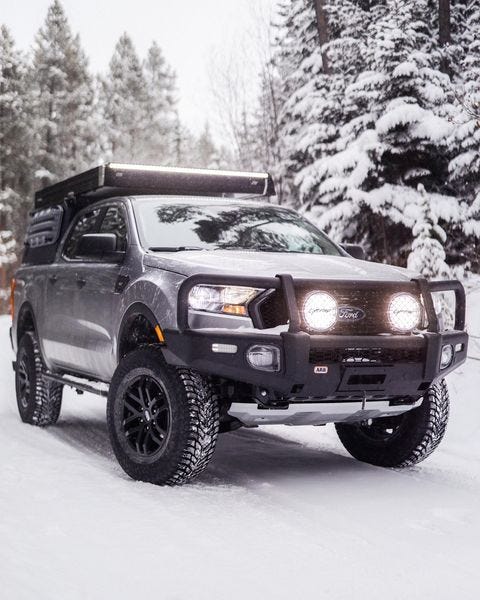
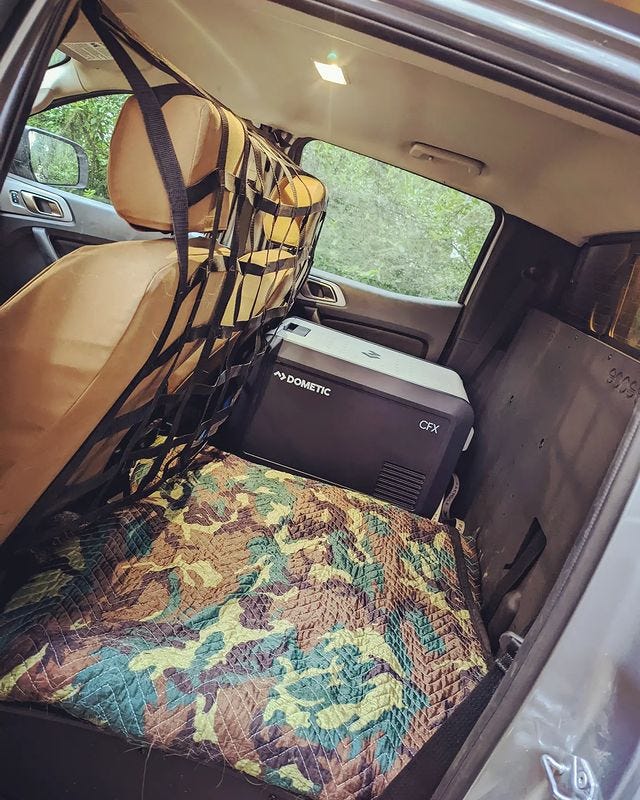
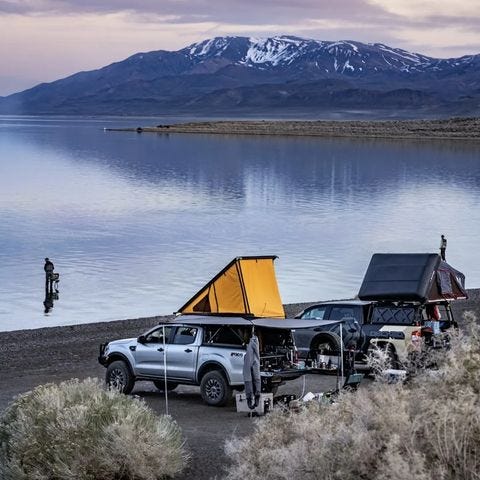
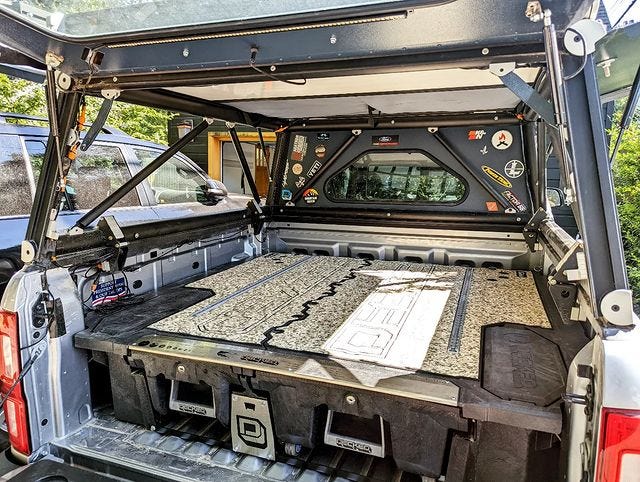
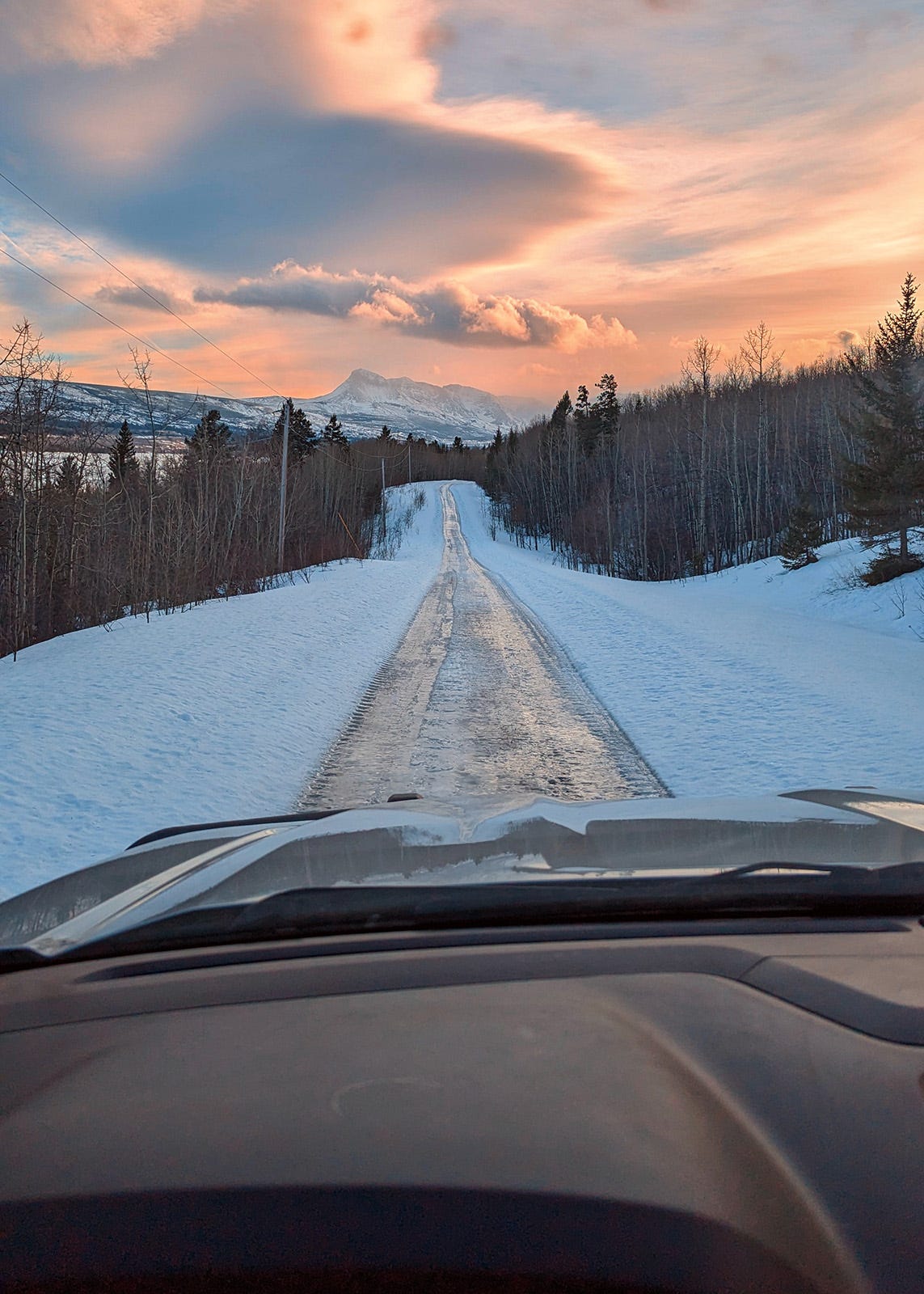
Oh, and thoughts on FX4 vs Tremor:
- fx4 gives you: skid plates, rear locker, off-road traction electronics, off-road cruise control (more useful than you'd think when shit gets really sketchy).
- Tremor only adds Fox 2.0, plus some appearance stuff.
- Fox 2.0 is a very, very basic system. I don't think there's even extra travel available from it.
- FX4 gives you everything you need/want on a stock truck you intend to modify, without asking you to pay more for suspension if you plan on replacing that anyways.
- Consider Tremor if you're leasing, really need everything rolled into a single finance payment, or are scared of performing modifications.
- understand that Tremor cannot match the ride quality, payload, handling, or travel of a really good aftermarket suspension system like OME BP-51.
I am a big fan of the Ranger and can’t wait for the US release of the 2024. I’m really hoping ARB USA partners with Ford like they do in Australia offering their full line of products to be order and installed by Ford dealers. To be able to go pick up a brand new Ranger with bull bar, skids, sliders, and BP51 set up sounds pretty perfect.